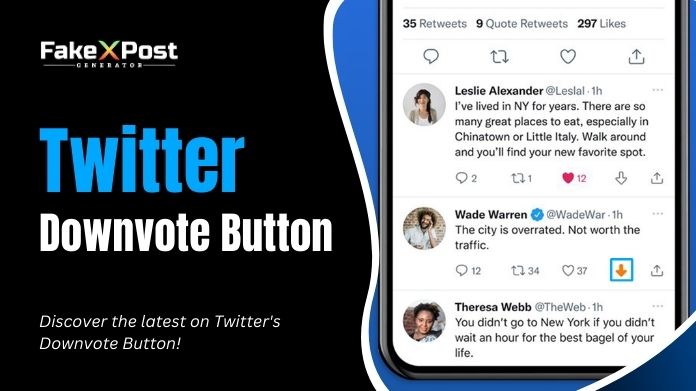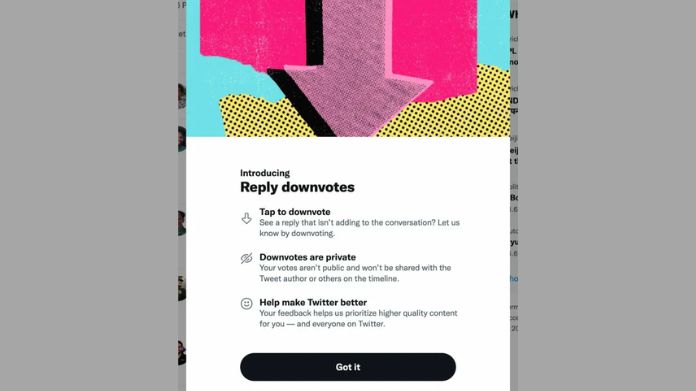In the ever-evolving realm of social media, Twitter, a platform synonymous with real-time conversations, has introduced a noteworthy feature – the Twitter Downvote Button. As users navigate the digital landscape, this new edition promises to reshape the dynamics of engagement and interaction.
This Fake Tweet Generator comprehensive guide aims to unravel the intricacies of the Twitter Downvote Button, offering an insightful exploration into its purpose, potential impact, and broader implications for the Twitter community.
In recent years, major social media platforms have been experimenting with various ways to enhance user experiences and foster healthy online discussions.
Twitter’s decision to introduce a downvote button signals a significant departure from the platform’s traditionally straightforward approach of utilizing likes (or favorites) as the primary form of engagement. With this new tool, users can express a nuanced opinion about a tweet without resorting to public replies.
Throughout this article, we will delve into the motivations behind implementing the downvote button, examining how it aligns with Twitter’s goals of improving conversation quality and promoting meaningful engagement. Additionally, we’ll explore the potential impact on content visibility, user behavior, and the overall atmosphere of Twitter conversations.
As we embark on this exploration, join us in uncovering everything you need to know about the Twitter Downvote Button and its implications for the future of social interaction on this influential microblogging platform.
What is the Twitter Downvote Button?

A downvote button on social media platforms typically allows users to express a negative sentiment or disagreement with a particular post or comment.
It serves as a means for users to signal disapproval without needing a direct reply. This can promote a more nuanced spectrum of feedback and contribute to a healthier, more diverse conversation.
How Twitter Downvote Button Will Work?

Twitter does not display downvotes or the percentage of downvotes on posts, nor does it consider the total number of likes or upvotes in the case of Reddit. Another popular platform with a dislike button is YouTube, which Google owns. In 2021, the amount of dislikes on videos was made private.
In a blog post from November, the business stated that its decision has decreased focused dislike attacking behavior, although the dislike button is still there. YouTube’s system differs significantly in that its creators can view the precise number of dislikes for each video.
When you visit the website or app, you should receive a notification from Twitter if you can utilize the new feature during testing. To the right of the button with a heart shape, a downward-pointing arrow will represent the downvote button.
Based on examples sent on Thursday, this is an example of the tweet that Twitter considers deserving of a downvote: “Does anyone have restaurant recommendations for New York City?” reads the original tweet. It’s my first time, and I feel overwhelmed. This tweet received a downvote with the message, “The city is overrated.” The traffic is not worth it.
The downvote option is now limited to answers, which has drawn criticism from many, but its position has also frustrated some.
Twitter stated, “We’re expanding this test – more of you on the web and soon iOS and Android will have the option to use reply downvoting. We learned much about the types of replies you don’t find relevant.” Although downvotes are private, they will help us understand what material users are interested in seeing.
Key Points of Twitter Downvote
This is how the feature will work:
1. Users can upvote or downvote all replies on their tweets.
2. Your downvotes will be visible to you only, while upvotes will be shown as likes.
4. No one will be able to know downvotes on a tweet.
3. Up or downvotes will not change the order of replies.
Final Note
In summary, the Twitter Downvote Button introduces a new way to express disagreement or disapproval with tweets. While its impact on conversations still unfolds, it reflects Twitter’s commitment to improving user interactions.
Approach it as a tool for constructive feedback, and as users adapt, the platform’s culture will evolve. Keep exploring the changes and stay engaged in the evolving dynamics of Twitter interactions.
